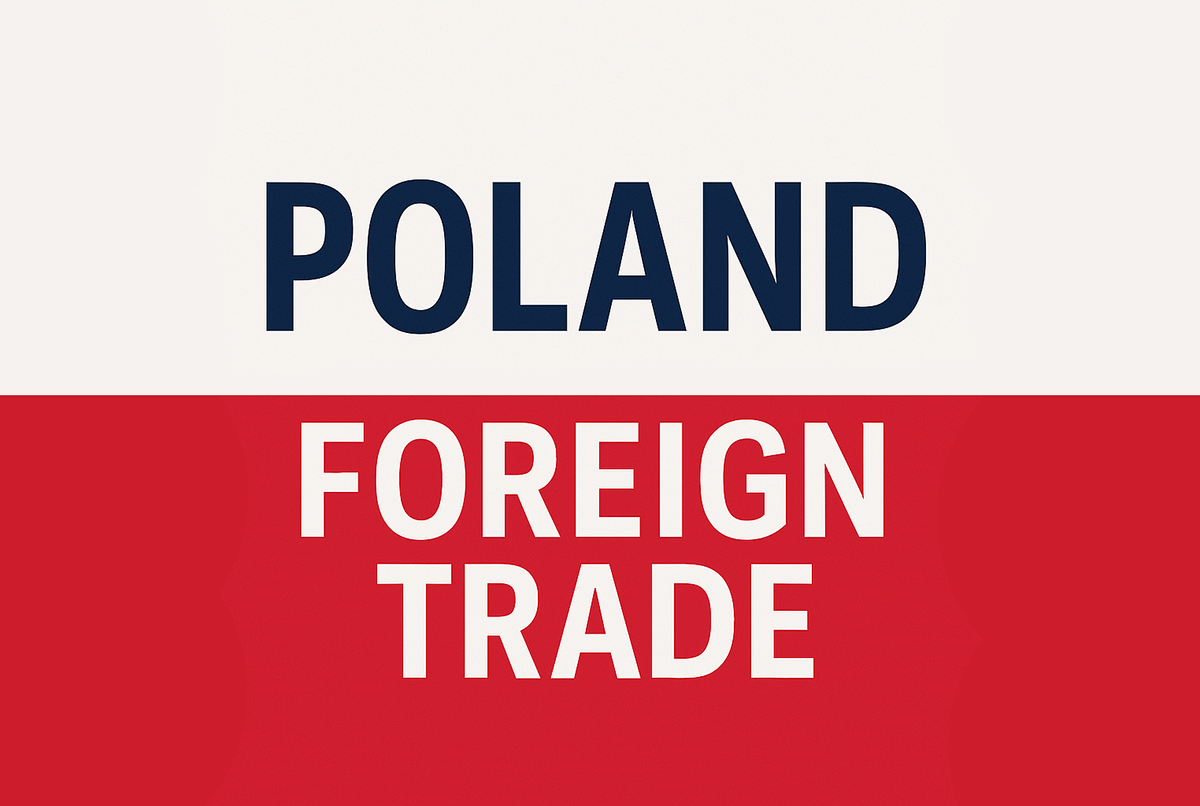2025-04-14
indicators

Poland’s foreign trade turnover in goods during January and February 2025 showed a mixed performance, according to new data released by the Statistics Poland (GUS). While total imports rose modestly year-on-year, exports fell, resulting in a negative trade balance for the two-month period. At current prices, total exports amounted to PLN 240.7 billion, a 5% decline compared to the same period in 2024. Imports, in contrast, rose by 1.1% to PLN 245.7 billion, leading to a trade deficit of PLN 5 billion. This shift marks a reversal from the previous year, which had registered a positive balance. When expressed in foreign currencies, exports stood at USD 59.2 billion (a 6.8% drop), while imports reached USD 60.5 billion (down 0.9%), producing a USD 1.2 billion deficit. In euro terms, exports totaled EUR 56.6 billion (down 2.7%) and imports EUR 57.8 billion (up 3.4%), also resulting in a EUR 1.2 billion shortfall. Shift in Trade Dynamics by Country Group Developed countries remained Poland’s primary trade partners, accounting for 86.9% of exports and 63.7% of imports. Within this group, European Union countries represented the largest share—73.6% of exports and 51.6% of imports. Despite this continued dominance, the share of EU countries declined slightly from a year earlier. Poland recorded a trade surplus with developed countries (PLN 52.7 billion) and with countries in Central and Eastern Europe (PLN 6.7 billion). Conversely, trade with developing countries resulted in a significant deficit of PLN 64.4 billion. Export and Import Trends by Country Exports declined to most major trading partners except the United States, Slovakia, the United Kingdom, and Ukraine, which saw modest increases. Exports to the United States rose by 7.5%, making up 3.6% of total exports, while imports from the U.S. jumped by nearly 15%, resulting in a PLN 4.5 billion trade deficit. Germany remained Poland’s largest trade partner, accounting for 26.8% of exports and 18.6% of imports. However, exports to Germany fell by 7.1% and imports by 7.4%, slightly narrowing the trade surplus with the country to PLN 18.6 billion. Other notable import increases were recorded from South Korea (up 32.6%), Denmark (up 22.5%), and China (up 13%). The overall share of the top 10 trading partners was 66.3% of exports and 61.2% of imports. Commodities and Sector Performance Exports saw growth in only three commodity sections: food and live animals (up 6.1%), crude materials (up 0.3%), and miscellaneous goods not classified elsewhere (up 18.8%). Declines were recorded in machinery and transport equipment (down 9.9%), mineral fuels (down 20.2%), and several other categories. On the import side, six commodity groups posted year-on-year increases. These included miscellaneous manufactured articles (up 14.2%), beverages and tobacco (up 9.2%), and food and live animals (up 5.2%). Declines were noted in mineral fuels (down 9.1%), machinery and transport equipment (down 4.2%), and others. Imports by Country of Consignment By country of consignment, developed countries accounted for the majority of imports (PLN 185.2 billion), with EU countries contributing PLN 163.2 billion. Imports from developing countries increased sharply, reaching PLN 56.4 billion. Germany remained the largest country of consignment, followed by China, the Netherlands, and the Czech Republic. Imports from the United States and China also registered notable increases, with the U.S. gaining in relative importance despite a smaller share than European partners. Outlook The early 2025 trade data highlights a challenging period for Polish exports, particularly to EU markets, amid broader global economic uncertainties. Rising imports—especially from non-European countries—are contributing to a growing trade deficit. The data points to shifting trade dynamics and underscores the importance of diversifying export markets and boosting domestic competitiveness in key sectors. Source: GUS

